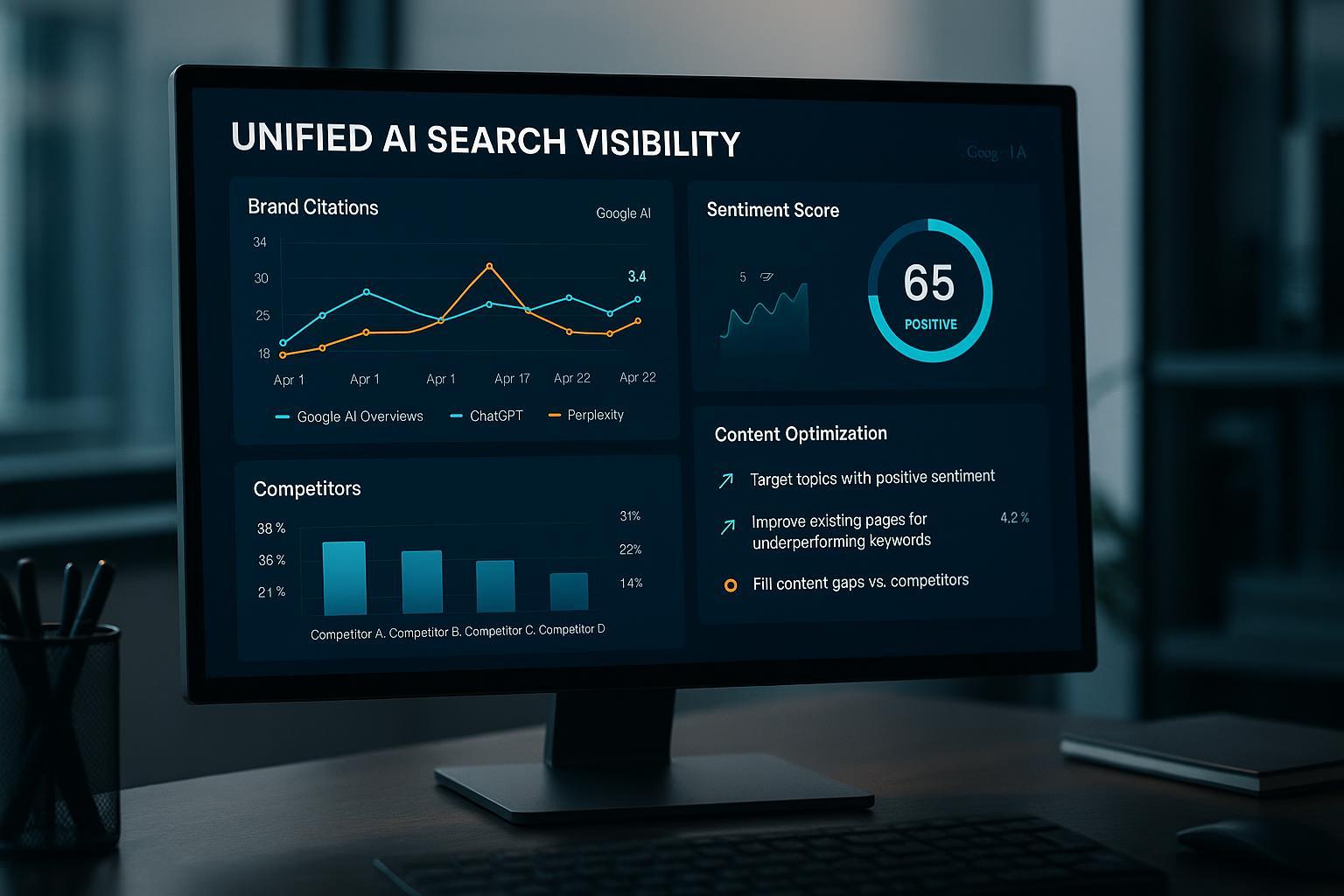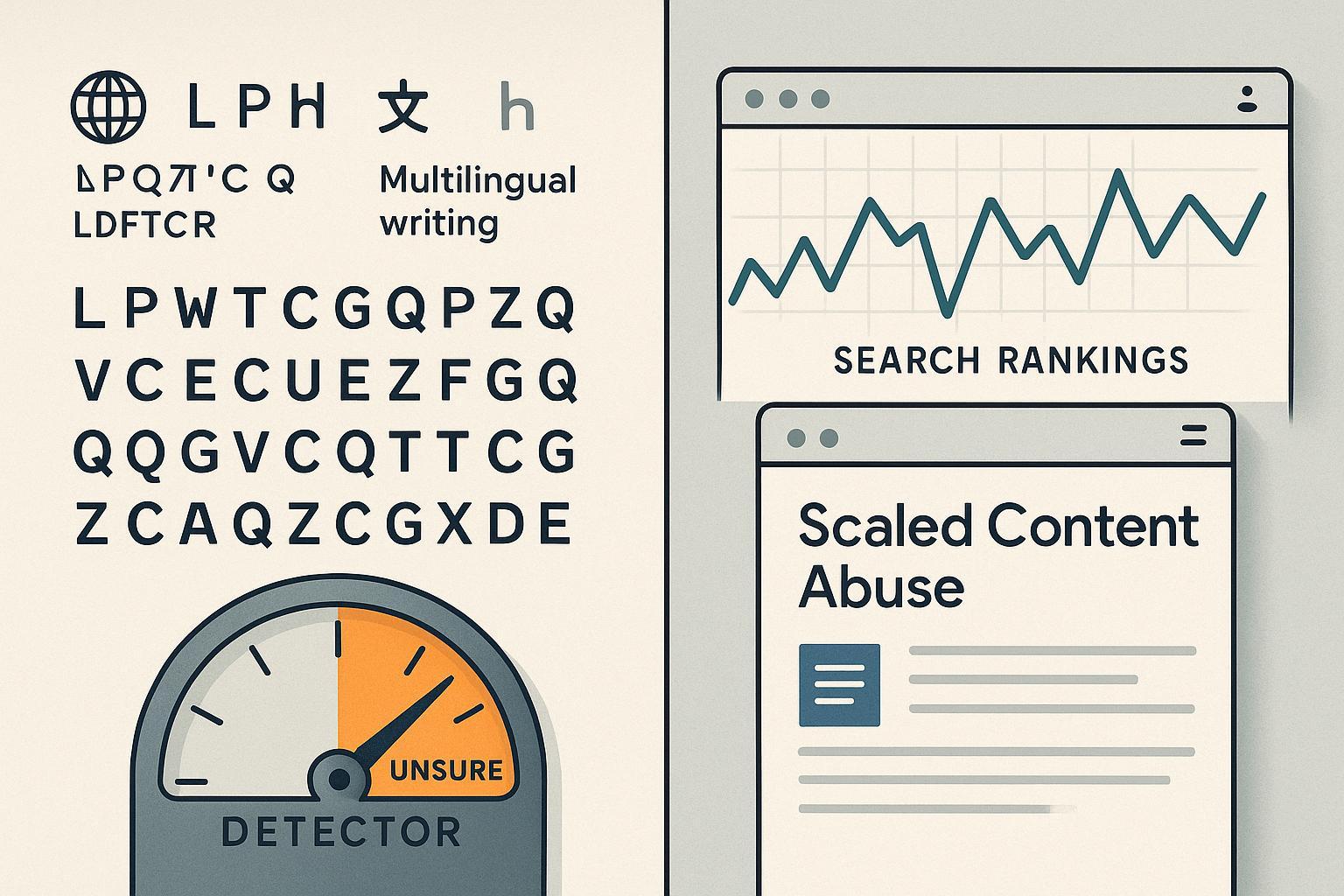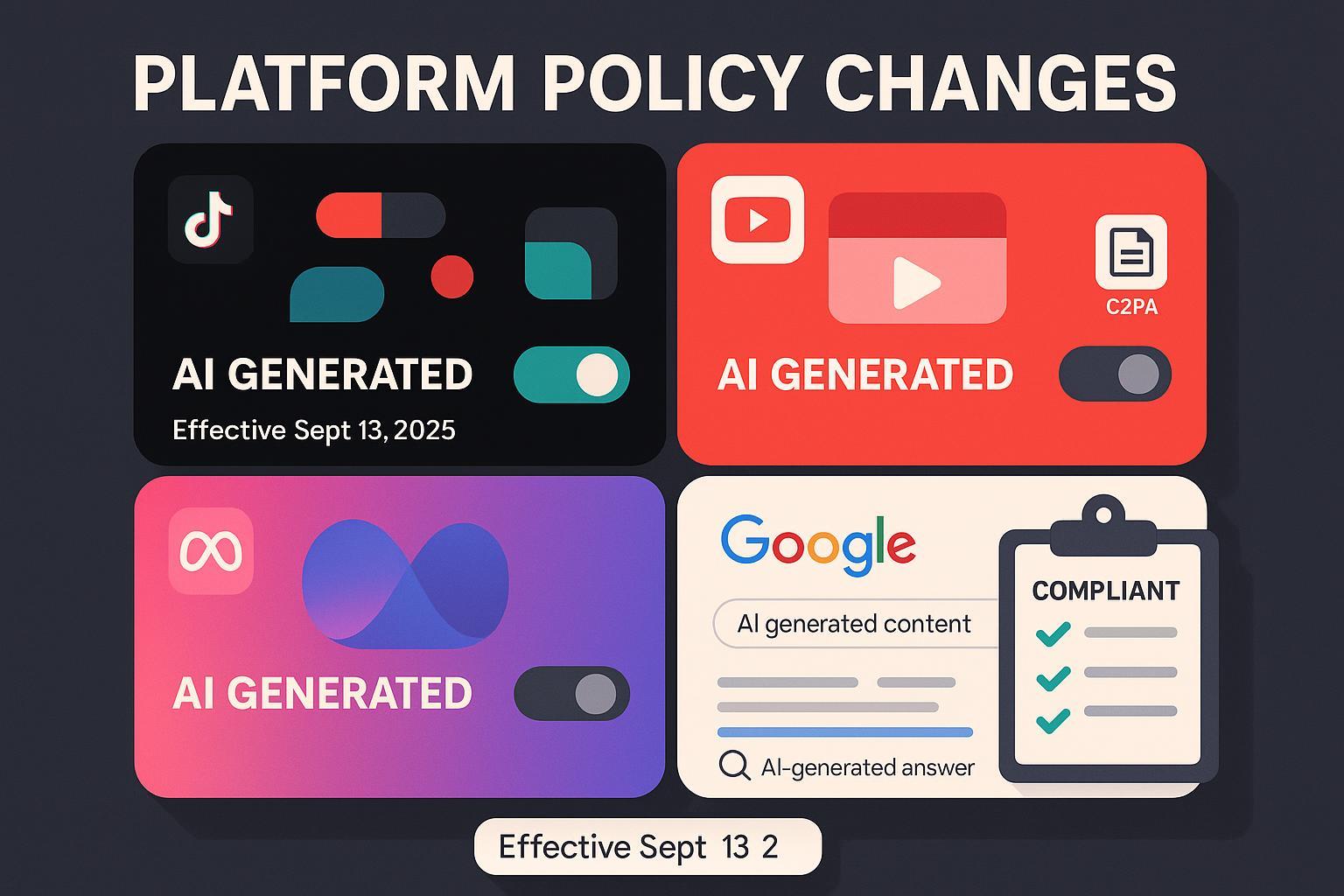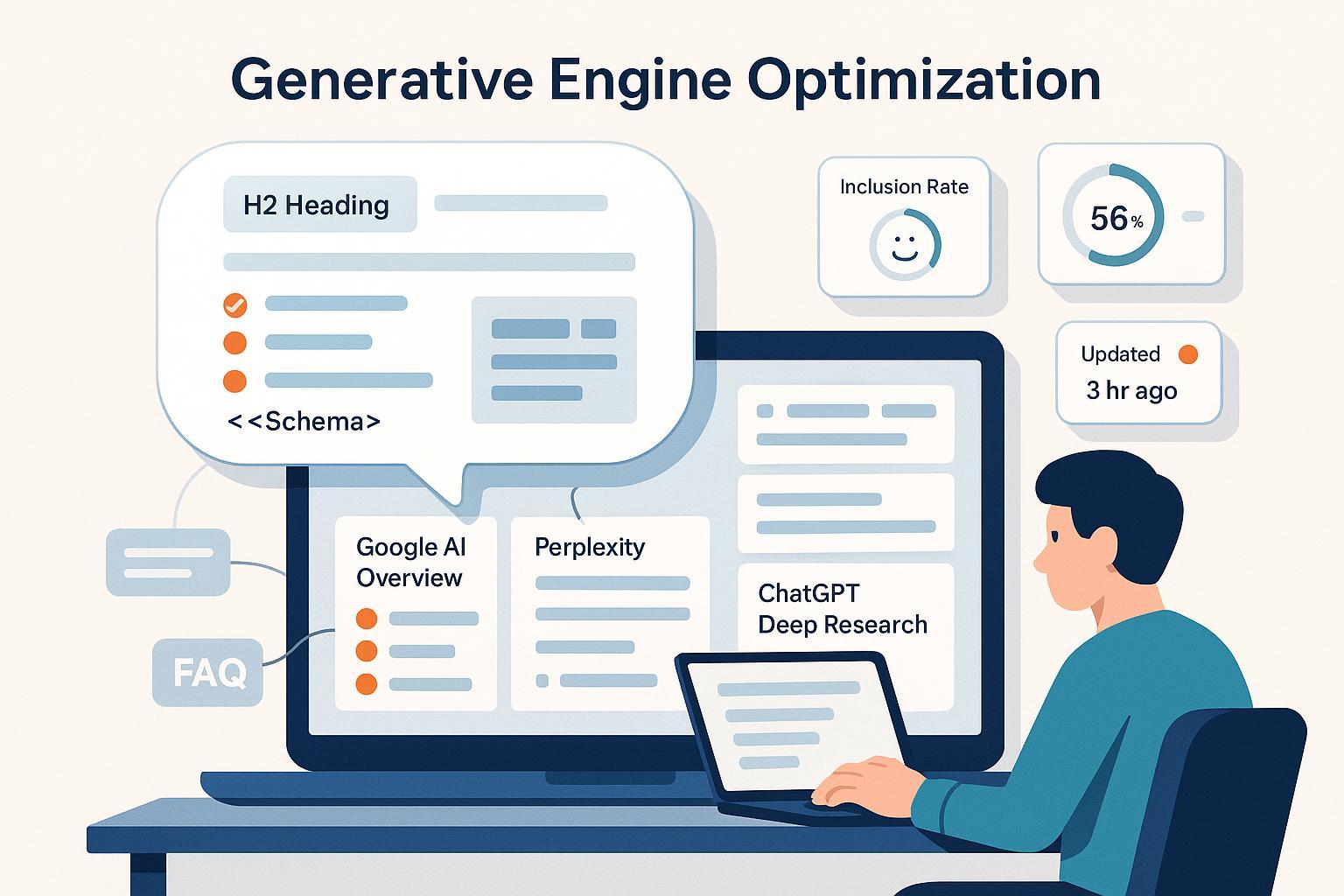2024 AI Search Analytics Best Practices: Prompt Mapping, Competitor & Content Insights
Discover advanced best practices for AI search analytics—prompt mapping, competitor analysis, and content optimization. Actionable insights for digital marketers and SEO pros, backed by Geneo case studies.


Introduction: Why AI Search Analytics Is Changing the Game
AI-driven search is redefining how brands achieve visibility, reputation, and traffic. Generative platforms—Google AI Overviews, ChatGPT, Perplexity—now prioritize mentions, contextual authority, and sentiment cues over traditional keyword tactics. According to Gartner’s Planning Guide for Analytics and AI 2025, more than 75% of enterprise marketing content will be influenced by GenAI algorithms by 2027. At stake is not just traffic, but share of voice, customer trust, and overall business impact. Enterprise teams must master advanced AI search analytics to win across both generative and conventional search.
Below, discover proven, measurable best practices—each mapped to actionable workflows, real industry data, and Geneo-powered optimization strategies.
1. Prompt Mapping for Generative AI Discoverability
Optimize brand citations in generative AI answers by deploying explicit, task-driven prompt mapping and robust structured data across all digital assets.
Prompt mapping—the strategic design of queries, content, and response signals for LLMs (Large Language Models)—is now fundamental to AI search visibility. Brands should:
- Develop clear, consistent prompt stacks and schema markup that target top questions, brand USPs, and authoritative data.
- Utilize reusable prompt templates (see OpenAI prompt engineering guide).
- Audit how brand assets appear in ChatGPT, Google AI Overviews, and Perplexity, adjusting language for explicit inclusion.
Geneo in action: With Geneo’s AI-driven monitoring and historical query tracker, teams instantly uncover which prompts, answers, and citations are driving exposure across leading platforms. The built-in content optimization suggestions adapt to LLM ranking changes in real time.
Pro tip: Brands using structured data and prompt stacks have seen up to 30% increase in answer inclusion rates (Xponent21 agency data, source).
2. End-to-End Competitor Analysis Across AI and Traditional Platforms
Benchmark your brand’s AI and conventional search presence by monitoring competitors' citations, sentiment patterns, and authority signals across every platform—and adapt content depth and authority accordingly.
Comprehensive competitor analysis now requires monitoring:
- Where and how brands are cited in generative answers versus traditional SERPs.
- Sentiment and topical depth around each reference.
- The frequency, nature, and ranking of competitor mentions in Google AI Overviews, ChatGPT, and Perplexity.
Geneo in action: Geneo unifies multi-platform citation and competitor tracking in one dashboard—visualizing how each brand stacks up, highlighting gaps in sentiment/authority, and offering content strategy pivots. Custom alerts flag emerging competitor moves and negative sentiment spikes immediately.
Industry benchmark: Statista reports SMBs saw referral traffic from generative AI answers grow 123% in 2024 after focused competitor citation benchmarking (source).
3. Real-Time Brand Visibility and Sentiment Monitoring
Achieve constant brand provenance by tracking real-time sentiment scores and exposure metrics across all AI-powered channels, responding proactively to shifts.
Modern brand monitoring now means:
- Continuous measurement of mention share, sentiment rating, and context in generative and legacy platforms.
- Setting key KPIs: citation frequency, referral traffic, share of voice (SOV), and positive/negative sentiment ratios.
- Deploying actionable alerts for sudden changes or competitor advances.
Geneo in action: Geneo’s proprietary sentiment engine analyzes multi-brand mentions, context, and tone across ChatGPT, Perplexity, Google, and more. Teams get instant feedback on brand mood and visibility, with historical data for benchmarking campaigns.
ROI evidence: Brands using real-time sentiment and visibility analytics improved positive score averages and reduced crisis response times by over 40% (Search Engine Land, referenced study).
Table: Key AI Search Analytics KPIs
| KPI | Definition | Measurement Frequency | Recommended Tool |
|---|---|---|---|
| Citation Frequency | No. of brand mentions in answers | Daily/Weekly | Geneo |
| Referral Traffic Growth | Increase in traffic from GenAI | Monthly | Statista, Geneo |
| Sentiment Score | Aggregated score across platforms | Real-Time | Geneo |
| Share of Voice (SOV) | Proportional visibility vs rivals | Monthly/Quarterly | Geneo, Panoramata |
4. Evidence-Based Content Optimization Frameworks
Structure and refresh content using schema markup, evidence-driven authority signals, and AI-tailored topic layers to maximize generative answer inclusion and referral outcomes.
The winning content formula in AI search includes:
- Advanced schema (FAQ, Product, Review) for LLM interpretability.
- Fact-anchored, citation-worthy data and industry benchmarks in every asset.
- Adaptive content modules that respond to evolving AI search guidelines.
Geneo in action: Geneo analyzes platform guidelines and adjusts content recommendations for each AI agent and legacy search engine. Clients report measurable uplift in generative citations and conversion-driving SOV after implementing Geneo’s optimization protocol.
External reference: According to Search Engine Land’s guide to generative engine optimization, brands embedding fresh benchmarks and authoritative signals see higher answer placement and better sentiment outcomes.
5. Unified Analytics, KPI Tracking, and Reporting
Drive strategic marketing decisions by consolidating AI and conventional search analytics, mapping progress to core business KPIs and actionable reporting dashboards.
Best-in-class teams:
- Integrate AI search indicators (answer inclusion, sentiment, traffic uplift) with traditional SEO and reputation metrics.
- Use unified dashboards to contextualize competitor actions, campaign effectiveness, and trend analysis.
- Routinely present ROI-focused reports to executive leadership—demonstrating the measurable impact of AI search optimization.
Geneo in action: Geneo’s all-in-one platform consolidates critical KPIs—enabling executive, SEO, and brand teams to see, share, and act on latest search and sentiment data collaboratively. Multi-team support and customizable reporting make advanced insights accessible to every stakeholder.
Expert citation: Gartner’s 2025 research points to unified analytics frameworks as essential for AI-empowered marketing and share-of-voice leadership (Gartner source).
Conclusion & Next Steps
AI search analytics is no longer an emerging trend—it’s the new standard for digital brand growth. Winning teams implement structured prompt mapping, continuous competitor benchmarking, real-time sentiment monitoring, and unified analytics workflows that tie directly to business impact. As generative platforms become the gatekeepers of brand discovery, adopting systems like Geneo enables superior visibility, context-driven reputation, and quantifiable marketing ROI.
Ready to transform your AI search strategy? Try Geneo for free or schedule a demo to see multi-platform brand analytics and sentiment-tracking in action.
Additional Resources





